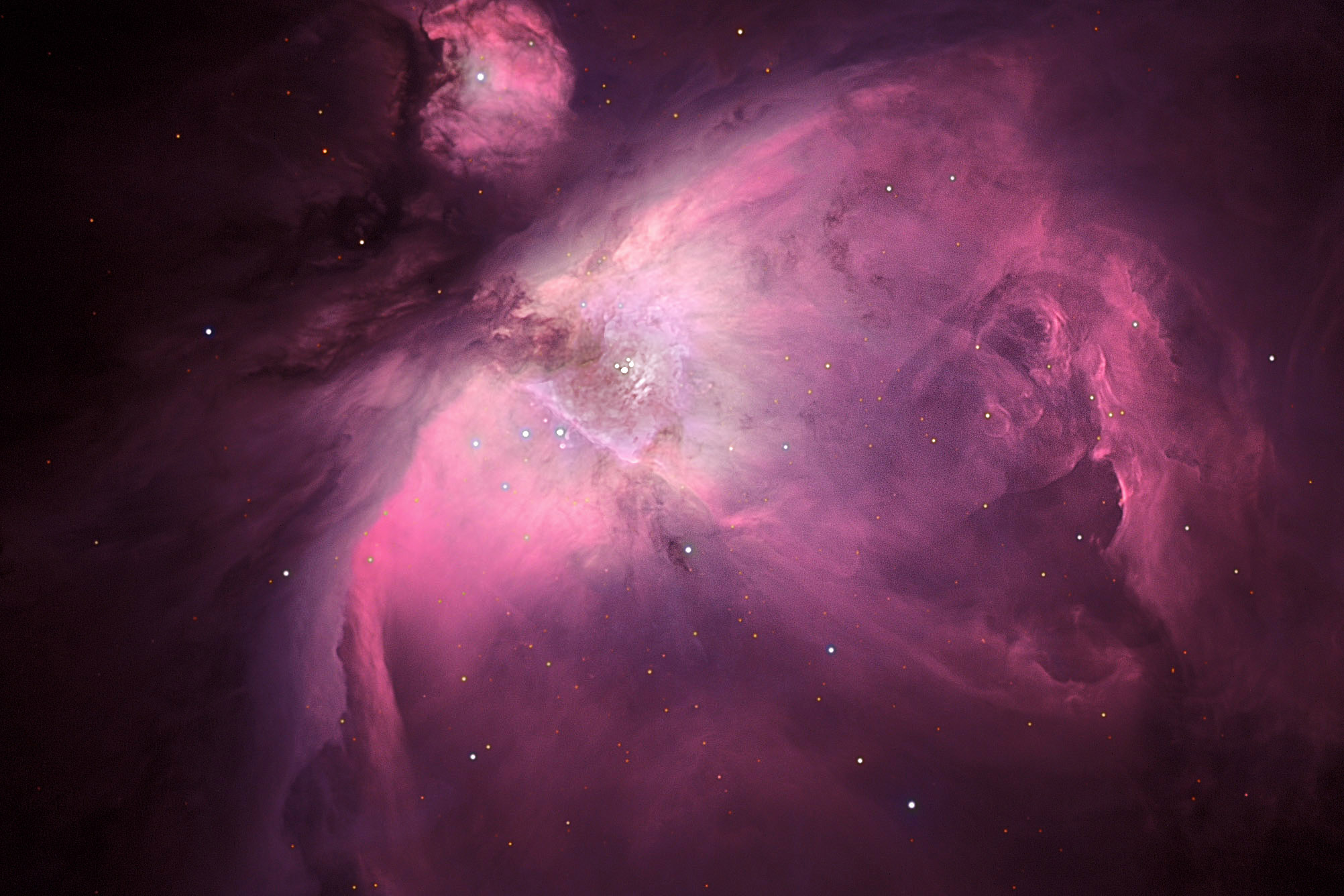| Description | Images |
Object name: M042Designation(s): M042, M043, M42 and 43 are two of the most famous objects in Messier's list. The complex is easily seen naked eye so who first saw it is unknown to history. Mayan's, Ptolemy and others have some claim to its discovery. The first telescopic discovery is usually credited to Nicolas Peiresc on November 24, 1610. Shortly thereafter a more detailed description comparing it to a comet of 1618 was made by Johann Baptist Cysat who may have described the Trapezium cluster as he referred to the nebula coming out of a bright rectangular object. Galileo saw three of the Trapezium's stars on February 4, 1617 but never mentions the nebula. The first sketching of it is normally said to be by Giovanni Battista Hodierna in 1684 but went unnoticed until 1985. Charles Messier saw the nebula and three of the Trapezium stars when he recorded it on March 4, 1769. It wasn't until 1865 when William Huggins showed spectroscopically it was made of "luminous gas" rather than unresolved stars. In 1889 Henry Draper took the first photo of it using an 11" refractor. Robert Trumpler gave the central star cluster consisting of 4 bright stars and hundreds of fainter ones, best seen in infrared light, the name Trapezium for the geometric shape of the four brightest stars. Now M42 and 43 must be the most photographed Messier object and maybe the most photographed astronomical object other than the moon and maybe planets like Jupiter and Saturn. Related Designation(s):1ES 0532-054, 1RXS J053516.6-052320, 2MASS J05353135-0516026, 2PBC J0535.1-0522, 2XMM J053531.2-051602, 2XMMp J053531.2-051602, 3C 145, 4C -05.21, AT20G J053516-052315, COUP 0809, COUP 1468, CXO J053516.4-052322, CXO J053531.3-051602, CXOONC J053516.4-052322, CXOONC J053531.3-051602, M042, M043, MAXI J0535-054, MESSIER 042, MESSIER 043, MRC 0532-054, NEWPS_5yr_5s 143, NGC 1976, NGC 1982, Orion A, Orion STARS, PAPER J083.76-05.38, PKS 0532-05, PKS B0532-054, PKS J0535-0523, SAXWFC J0535.3-0525.4, Trapezium, Trapezium Cluster, XMMSL1 J053515.9-052323, XSS J05351-0519, [CW2008] J053516-052329, [KC97] G209.0-19.4, [WB92] 0532-0525, |
